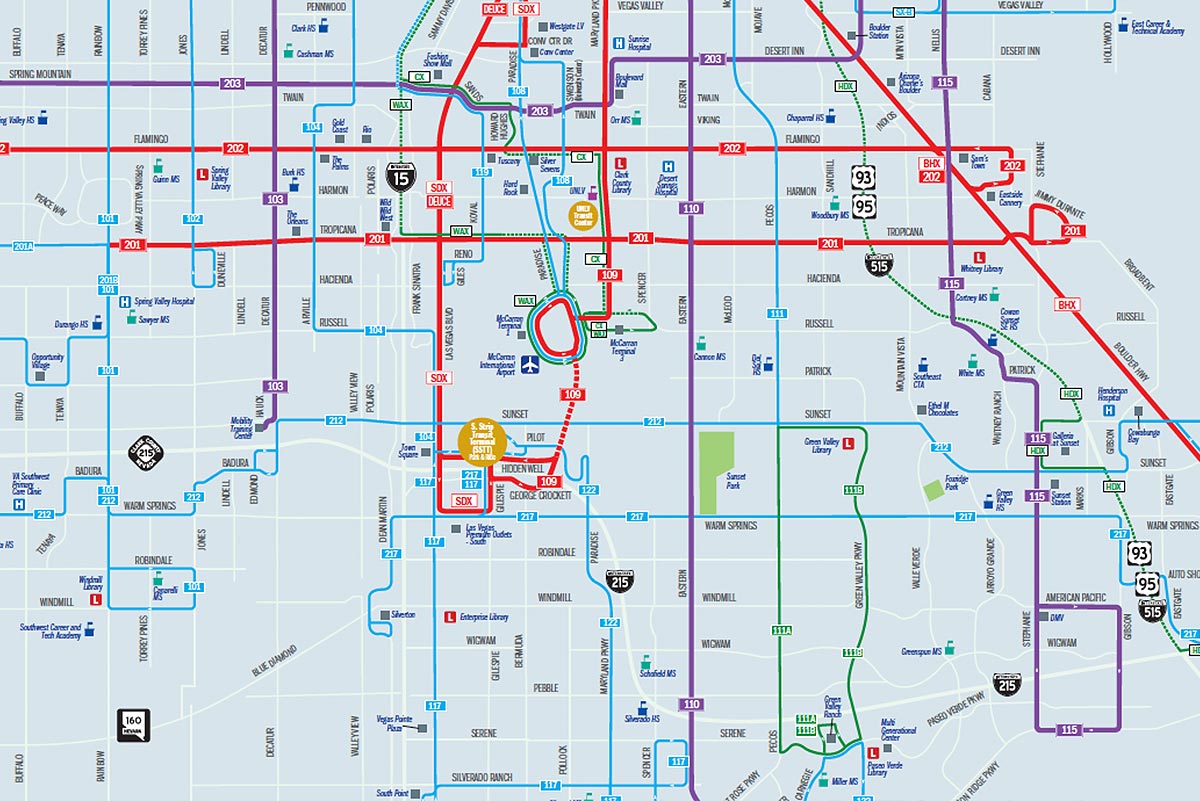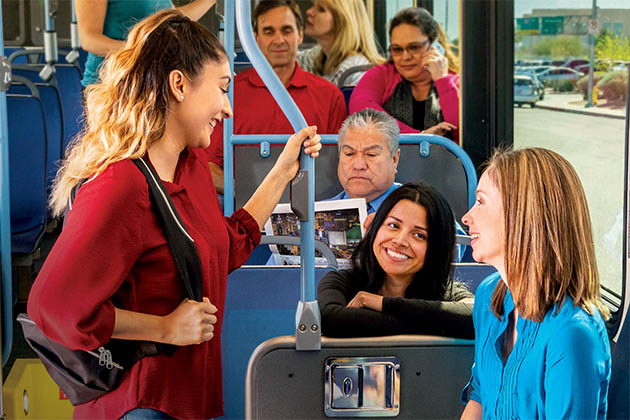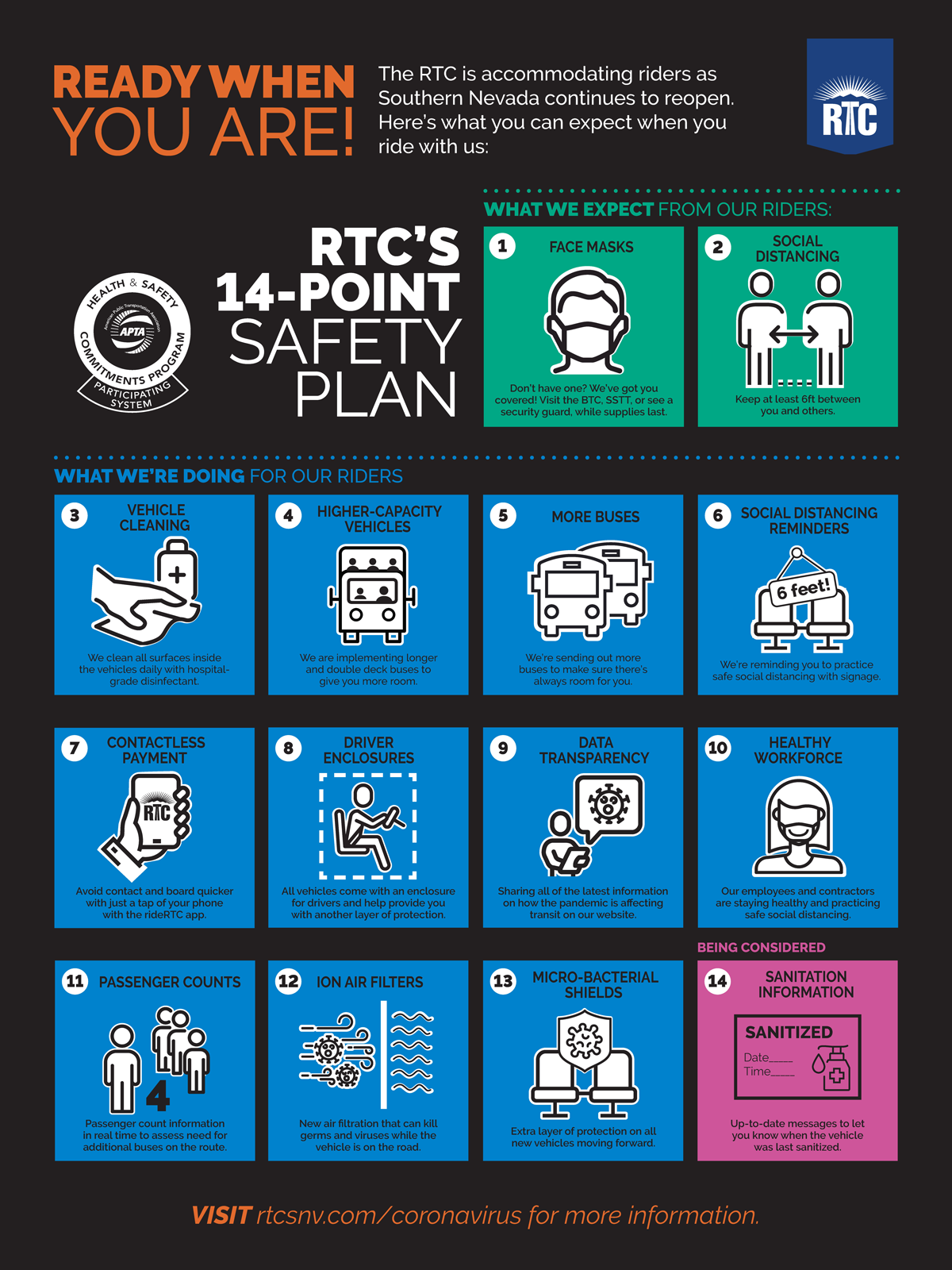Transportation Tracking & Adjustments
The Regional Transportation Commission of Southern Nevada (RTC) understands the essential role public transportation provides for Southern Nevada. We are continuously working to provide critical service while helping to safeguard against the spread of COVID-19. To keep our community informed of the current state of transportation and the actions we have taken during the pandemic, we have highlighted key information below.
TRANSPORTATION TRACKING & ADJUSTMENTS
Since the pandemic hit, and subsequent stay-at-home orders were issued in Southern Nevada, the RTC has continued to track traffic counts and transit data including on-time performance (OTP), ridership, vehicle capacity and revenue. The information below provides a closer look at that data.
Average Non-Strip Ridership
The data in the chart below shows the comparison of passenger ridership before the pandemic versus the most recent passenger ridership information.
On-Time Performance by Month
On-time performance refers to the level of success of the service remaining on the planned schedule. Many factors can affect on-time performance, including unexpected traffic congestion, detours, weather, or in this case, the effects of a pandemic. The chart below provides a monthly breakdown to show a comparison of on-time vehicle performance before the pandemic versus the most recent data.
Productivity of Non-Strip Routes
The RTC is experiencing a significant drop in overall transit productivity, which can be used as a measure of transit vehicle passenger loads. The graph below tracks boardings of vehicles in service, per hour, starting with February 2020 (before the pandemic) up to the most recent boarding data.
Total Regional Passenger Vehicle Miles (VMT)
The pandemic has also had an immense effect on traffic. The data below tracks Southern Nevada traffic activity between March 2021 to June 2021, showing the initial decrease in March 2020 until its return a year later in March 2021.
Revenue by Month
The RTC is currently experiencing a severe drop in funding as a result of the COVID-19 pandemic. The data below shows the comparison of monthly revenue before the pandemic versus the most recent revenue information.








































